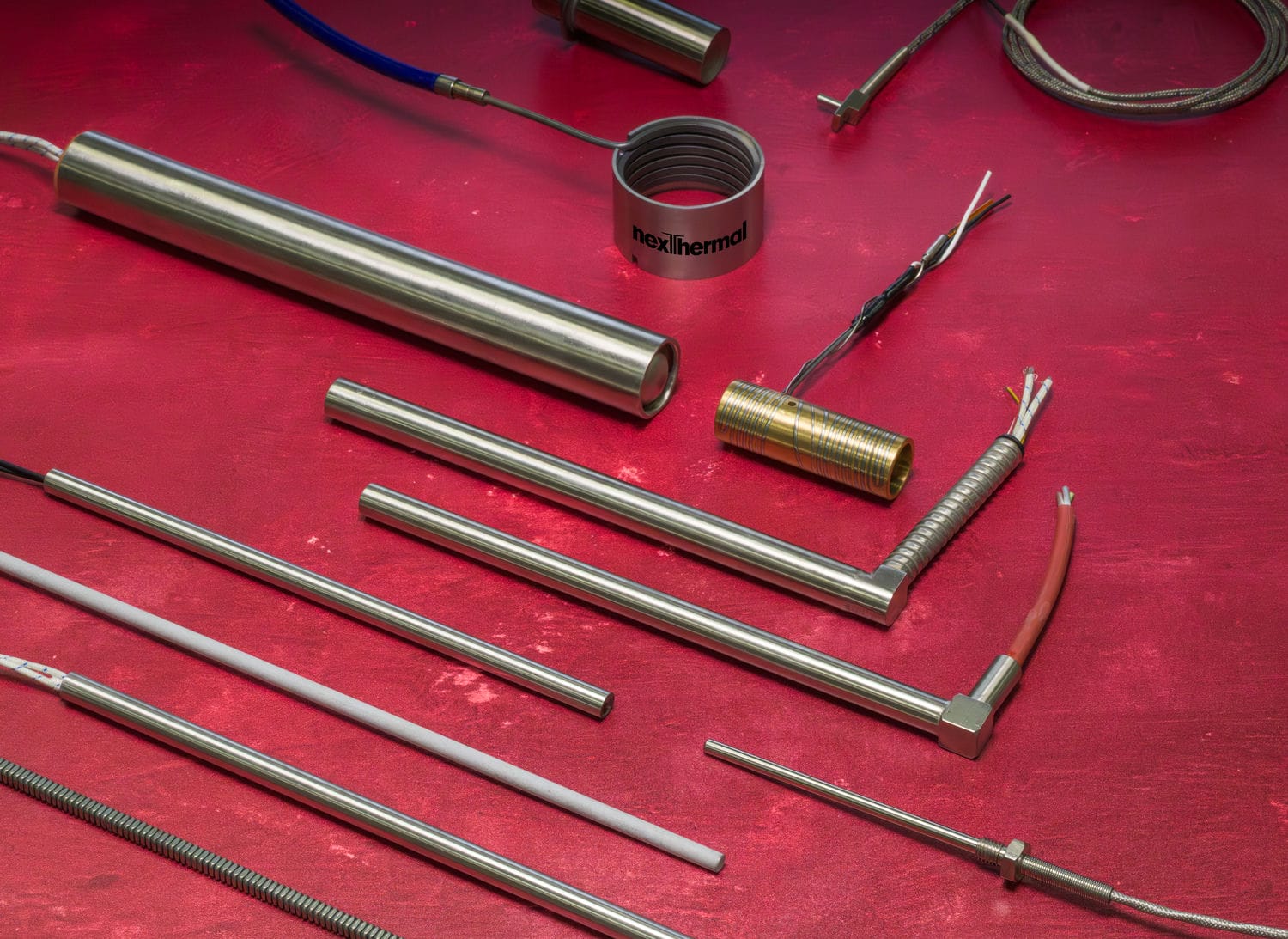Both thermocouples and resistance temperature detectors (RTDs) are used to measure the level of heat in scales, including Fahrenheit and Kelvin. These devices are used in many types of settings and applications, presenting a choice between the use of thermocouples or RTDs. There are benefits and drawbacks to each type of temperature sensor that make them ideal for certain specific conditions. At Nexthermal, we are your source for thermocouples and RTD sensors for your custom heating applications.
Resistance Thermometer Detectors
A metal’s electrical resistance increases as the heat increases and the temperature of the metals increases, while their electrical resistance drops with a reduction in the heat and the temperature of the metals cool down. RTDs are temperature sensors that measure local temperature changes by using the variations in metals’ electrical resistance. In order to interpret the readings, the metals used by RTDs must have known electrical resistances and must be recorded for reference. As a result, for the construction of RTDs, nickel, copper, and platinum are all popular metals used.
Thermocouples
Thermocouples are also temperature sensors. These sensors utilize two different metals to generate a voltage that is readable and allows you to determine the local temperature. Various metal combinations may be used in the construction of thermocouples to supply different calibrations with different sensor characteristics and ranges in temperature.
RTD vs Thermocouple
When it comes to measurement speed, ruggedness, cost, and the temperature ranges measurable by them, thermocouples have the advantage over RTDs. The installation cost of RTDs is less, but they can also be 2.5 to 3 times as expensive as thermocouples, which outweighs the cheaper installation of RTDs.
Thermocouples are also designed with greater reaction time to temperature changes and more durability. Primarily, thermocouples excel in their temperature range. Most can measure as high as
2700 °F whereas most RTDs can only measure up to of about 1000 °F.
RTDs provide more accurate readings than thermocouples. Over multiple trials, users of RTDs read the same temperatures. Therefore, they provide more stable readings over a longer period of time, than do thermocouples. The design of RTDs enables them to receive stronger signals and makes it easier to calibrate readings.
To learn about the RTD and thermocouples we offer at Nexthermal, call us today at 269.964.0271 or contact us through email at sales@nexthermal.com.











